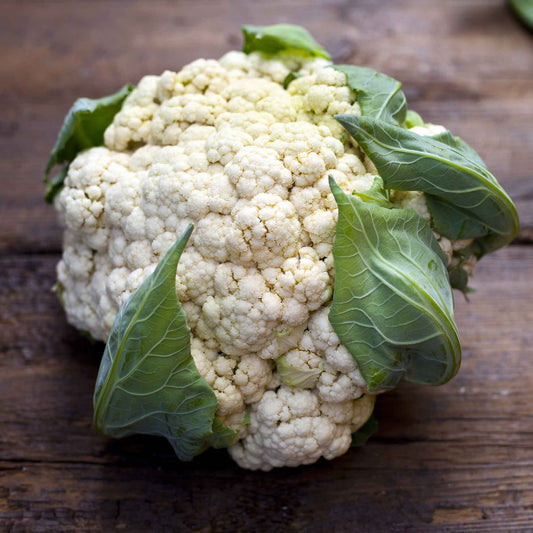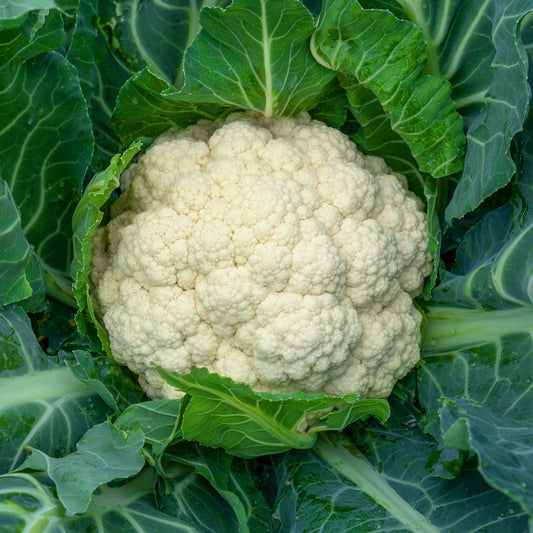-
main-collection-product-grid

Cauliflower Seeds - Snowball Y Improved
Immaculately white, frost tolerantSaleCauliflower Seeds - Snowball Y Improved
Immaculately white, frost tolerantRegular price As Low As $4.99Regular priceUnit price per$32.99Sale price As Low As $4.99Sale -
main-collection-product-grid

Cauliflower Seeds (Organic) - Snowball Y Improved
Large, delicious heads high in Vitamin CSaleCauliflower Seeds (Organic) - Snowball Y Improved
Large, delicious heads high in Vitamin CRegular price As Low As $6.99Regular priceUnit price per$78.99Sale price As Low As $6.99Sale
Growing cauliflower seeds in your garden
- Cool season vegetable, perfect for microgreens
- Frost-tolerant and wonderful for fall and winter harvest
- Thrives in full sun conditions
- Stores well in the freezer
All you can do with the versatile cauliflower
Cauliflower has been working hard to improve its image. Many people are finding out just how versatile this pale vegetable can be, which was once regarded to be bland and boring. Cauliflower rice? Pizza made out of cauliflower?! WHAT?! Grow your own and experiment with the many different ways you may use this Brassica.
Growing and caring for cauliflower
To start your cauliflower seeds, plan on transplanting seeds from indoors to outdoors either two to four weeks before the last spring frost or six to eight weeks before the last fall frost. Seeds should be started four to five weeks before transplanting. Cauliflower seeds prefer fertile, well-drained but moist soil with plenty of rich organic matter. The pH of the soil should be between 6.5 and 6.8. Choose a sunny area to plant where seeds will have at least six hours of direct sunlight each day.
Plant seeds about 1/2 inch deep and water fully. Cover with plastic wrap until seeds have sprouted. Remove plastic and place seeds under grow lights for 14 to 16 hours per day. Carefully harden off plants and place them outside for about one hour on the first day, adding more time each day for about two weeks. Then transplant outdoors.
Harvesting the best cauliflower
Cauliflower plants require about two inches of water per week, in addition to normal rainfall. Use a fertilizer high in nitrogen three to four weeks after transplanting. Most varieties will be ready to harvest after about 50 to 100 days after sowing. The heads should be compact, white, and firm and about six to eight inches in diameter. To harvest, cut the head of the plant with a large knife, leaving some leaves around the head to protect it. Cauliflowers will last about one week if refrigerated in a plastic bag.
If left unharvested, the head of the cauliflower will separate, much like a blooming flower. This is because the part of the plant we typically eat is actually the flower buds of the cauliflower plant. To be more specific, the head of a cauliflower is a cluster of immature flower buds, known as a curd.
For more information about planting, growing, and caring for cauliflower seed, see the Cauliflower Seeds Planting Guide.

